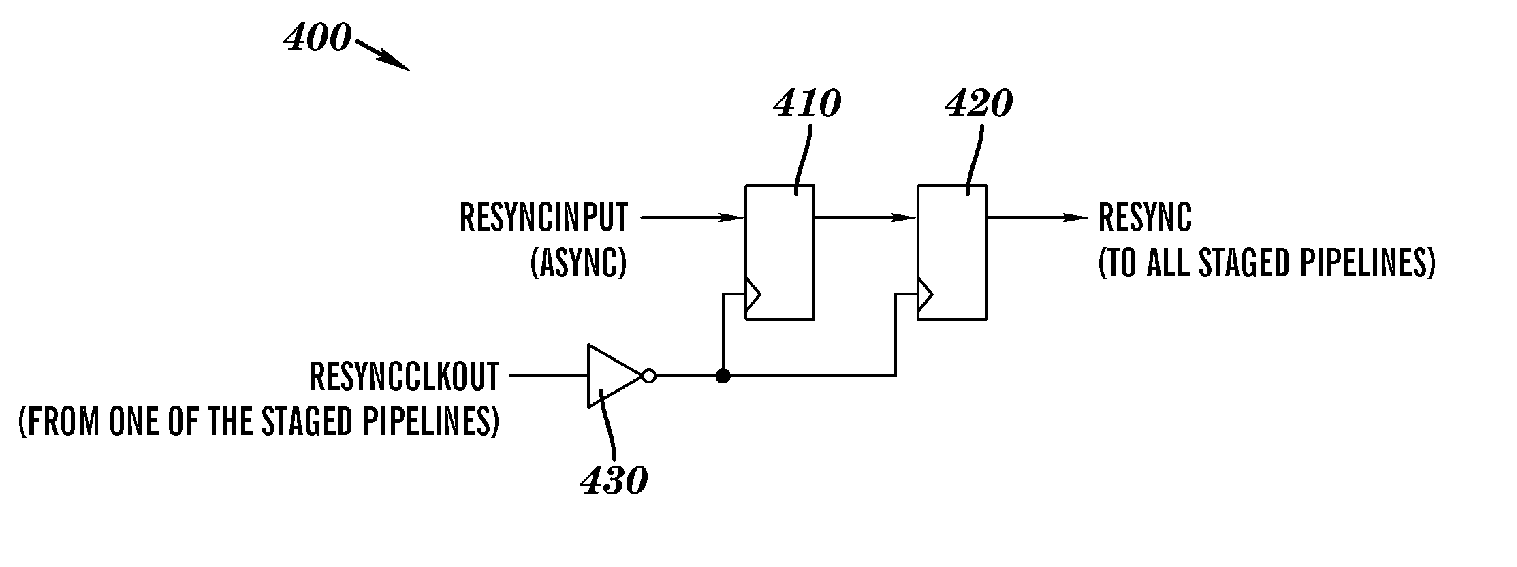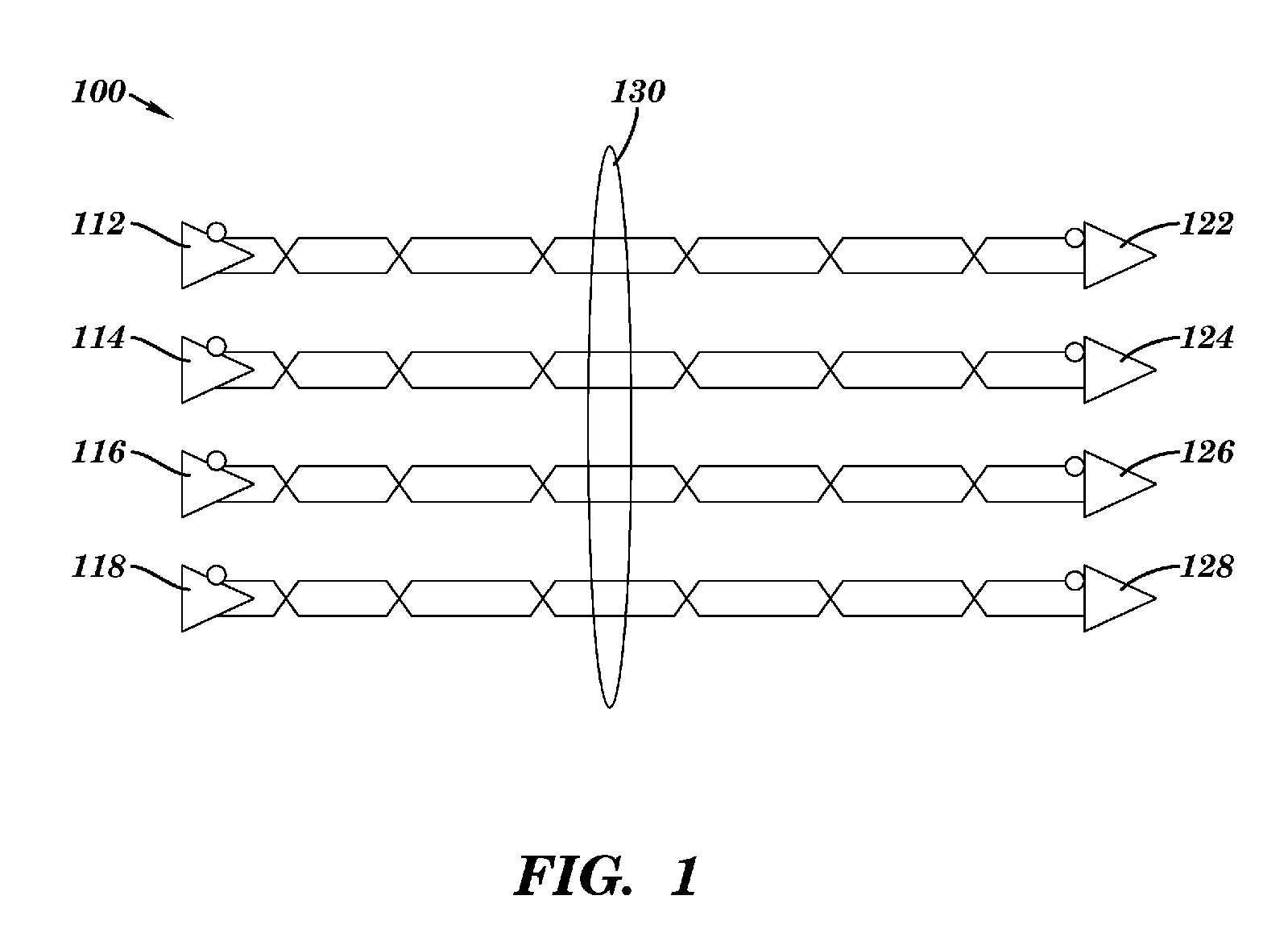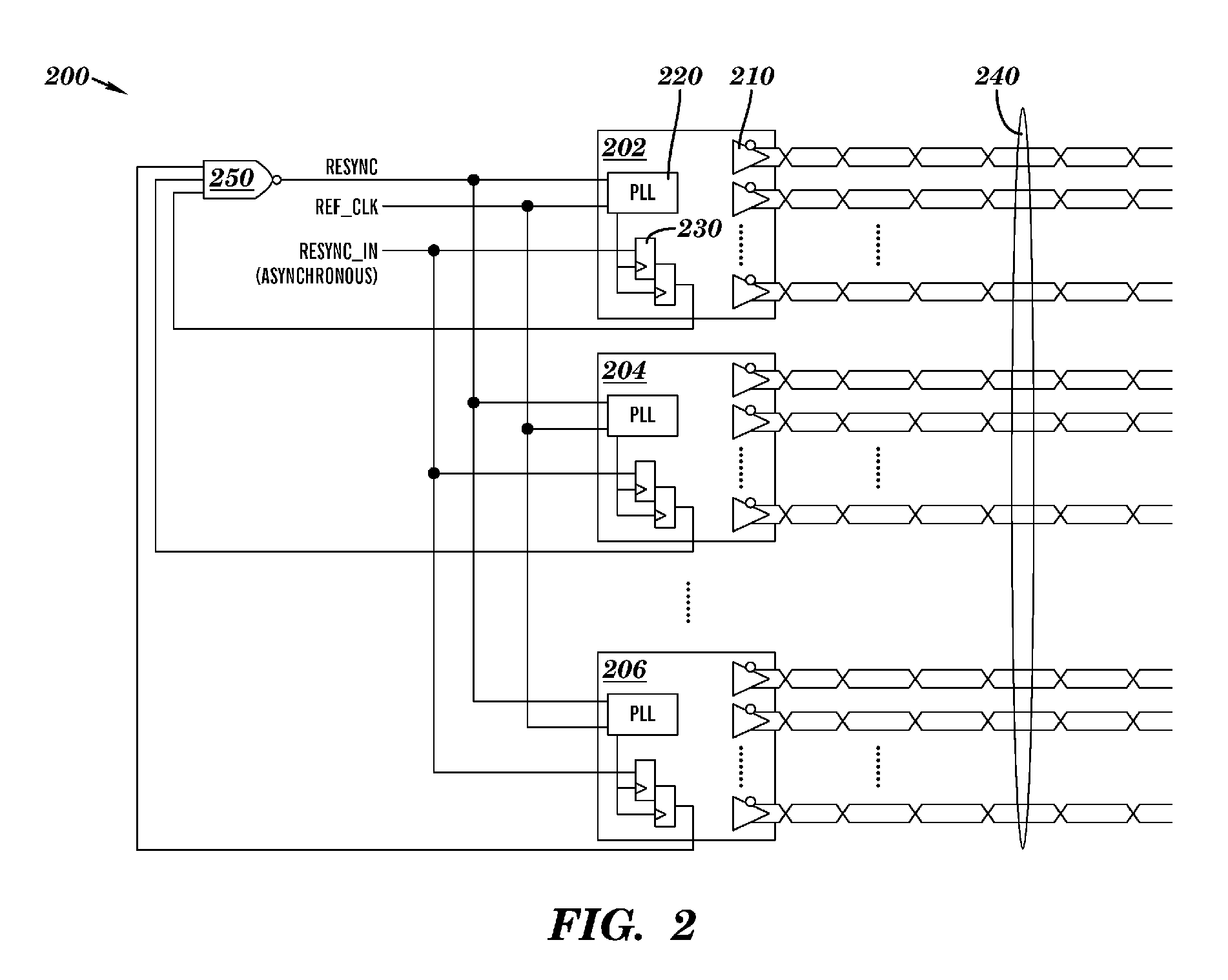Multi-channel synchronization architecture
a multi-channel, synchronization technology, applied in the direction of digital transmission, data switching network, electrical apparatus, etc., can solve the problems of affecting the integrity of data, affecting the speed of synchronization signal skew, and limiting the width of off-chip parallel busses and the number of external i/o pins, so as to reduce the effect of resynchronization signal skew
- Summary
- Abstract
- Description
- Claims
- Application Information
AI Technical Summary
Benefits of technology
Problems solved by technology
Method used
Image
Examples
Embodiment Construction
[0032] The present invention provides a robust global timing resynchronization architecture, multi-link communications system including the same, and a method for minimizing the effects of resynchronization signal skew, reference clock skew, and PLL static phase error variations on resynchronization of multi-link communications systems.
[0033] An embodiment of the present invention provides a resynchronization scheme which enables an asynchronous resynchronization input signal to be sampled reliably by correlated clock pulses within the clock domains of each serial link contained within the multi-link communications system. An embodiment of the multi-link communications system of the present invention includes serial link cores where each core contains a plurality of serial links (e.g., serial link transmitters or serial link receivers). Alternatively, each serial link included in the multi-link communications system can be provided as a separate Integrated Circuit (IC). Portions of...
PUM
 Login to View More
Login to View More Abstract
Description
Claims
Application Information
 Login to View More
Login to View More - R&D
- Intellectual Property
- Life Sciences
- Materials
- Tech Scout
- Unparalleled Data Quality
- Higher Quality Content
- 60% Fewer Hallucinations
Browse by: Latest US Patents, China's latest patents, Technical Efficacy Thesaurus, Application Domain, Technology Topic, Popular Technical Reports.
© 2025 PatSnap. All rights reserved.Legal|Privacy policy|Modern Slavery Act Transparency Statement|Sitemap|About US| Contact US: help@patsnap.com



